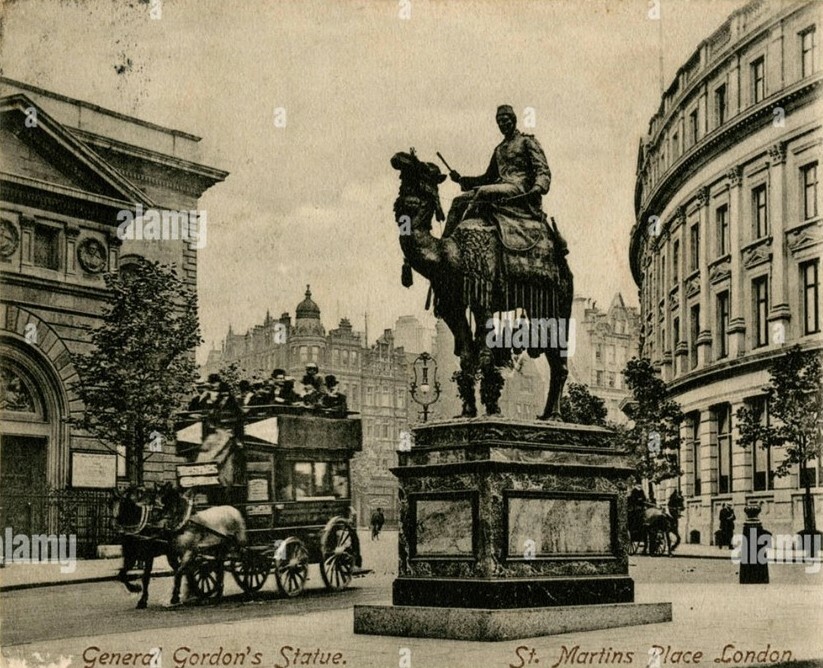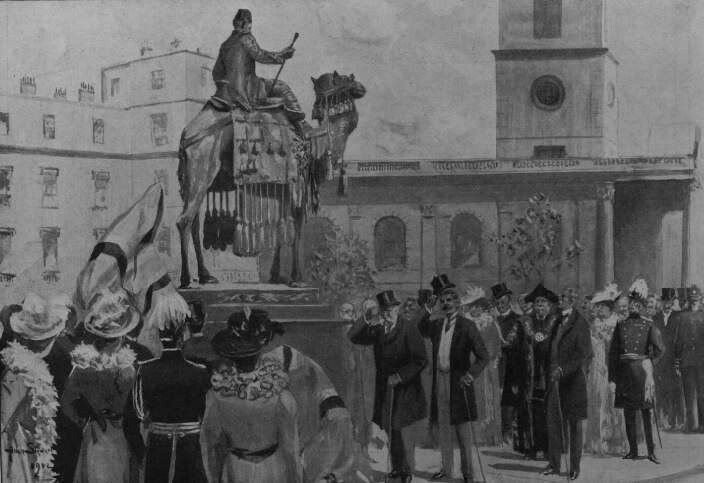Erection date: 18/7/1902
To commemorate Gordon, the Corps of Royal Engineers, Gordon's own Corps, commissioned a statue from Edward Onslow Ford. The original specification was for a statue of General Gordon on foot in the uniform of an Egyptian General, but the sculptor considered it more appropriate for him to be mounted on a camel. To this end Ford made studies at London Zoo, including casts from a dead camel, and the sculptor's camel design prevailed.
The first casting was exhibited at the Royal Academy in 1890 and was then erected in Brompton Barracks near Chatham, Kent, where it remains.
The second casting was originally unveiled in 1902 in St. Martin's Place {where the Cavell statue now is}, but was shipped to Sudan in October of that year and erected in Gordon Avenue, Khartoum. Here it remained until 1958, when, rejected by the Sudanese Government after independence, it was presented by the British government to Gordon's School where, since 1959, it has been situated at the edge of the playing fields. Making the camel better travelled than many of flesh and blood.
Source: Historic England.
For another London camel statue see Imperial Camel Corps.
Site: General Gordon on a camel (1 memorial)
WC2, St Martin's Place
With lost memorials we usually have to rely on other websites for photographs. The image showing the entrance to the National Portrait Gallery is from Alamy. The image showing St Martins-in-the-Fields is from A London Inheritance, a whole post about the buildings on the site immediately to the north of the statue.











Comments are provided by Facebook, please ensure you are signed in here to see them